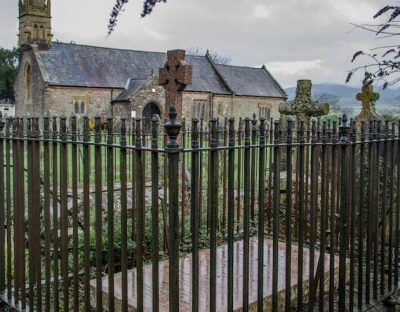Mayor Thomas Phillips
Defender of Welsh Language & Culture
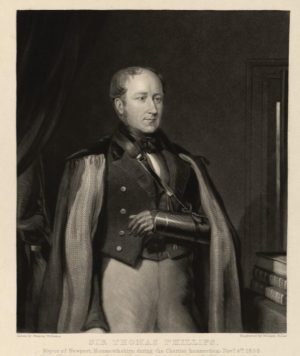
Mayor Phillips was a person that we heard a lot about growing up, our nanna Catherine Phillips would proudly tell us how we were related to the former mayor of Newport. Thomas Phillips was a barrister, educator and author, but best known as the Mayor of Newport in 1839 when John Frost led the Newport Rising. As part of our family research we wanted to find out more about Thomas and discover how we were related to him.
Thomas Phillips was born in Llanelly during 1801, the eldest son of Thomas Phillips Sr. (b. 1765) of Llanellen House in Abergavenny and Ann James. Ann was the eldest daughter of Benjamin James from Llangattock near Crickhowell. During Thomas’ childhood the family moved to Trosnant, near Pontypool.
Through parish records we were able to identify shared relatives that dated back to our fifth great-grandfather, John Phillips, who was born near Abergavenny in 1695. This shared ancestor means that Mayor Phillips’ father, Thomas Phillips Sr. was the nephew of Phillip Phillps, our 4th great-grandfather! Phillip born in 1718 was from a landowning family in Llanover, four miles south of Abergavenny. He was a significant man in his own right and was remembered with a ledger stone at Llanover church.
Thomas grew up with siblings Mary and Benjamin, and after completing his education he embarked on a career in law. He served an internship with Thomas Protheroe, a renowned attorney in Newport, and later became his partner. The 1937 Monmouthshire Voting Register shows that Thomas owned the freehold of a house in Llanellen. The two attorneys took an active interest in local politics and on the 9th November 1838, Thomas was elected Mayor of Newport.
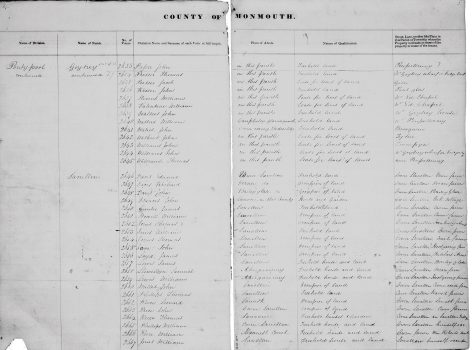
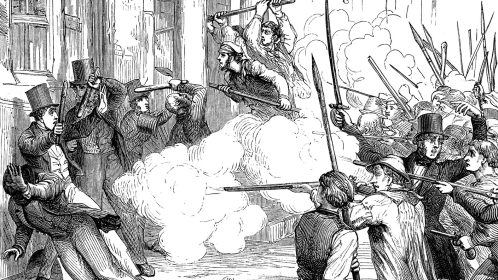
A year later on 4th November 1939 Mayor Phillips was in charge of the town when John Frost and 7,000 Chartists arrived in Newport. They were there to release Henry Vincent who was in prison for unlawful assembly and conspiracy. Mayor Phillips took control of the 30-strong company of the 45th Regiment of Foot and took up station in the Westgate Inn. When the hotel was attacked, Phillips was wounded with bullets in the arm and groin, the soldiers opened fire on the crowd killing 22 and wounding 50, ending the uprising.
Thomas Phillips was knighted to mark his “individual exertions in maintaining her majesty’s authority” and given the Freedom of the City of London and a subscription of £800. He then gave up his legal partnership and was called to the bar at the Inner Temple in 1842. Shortly afterwards he set off on a tour of parts of Europe and the Middle East, taking with him a draughtsman, Richard Dadd.
In 1865 Phillips was named a Queen’s Counsel and a bencher of his inn. His principal practice lay in parliamentary committees, and many lawsuits were referred to him for arbitration. In Monmouthshire he acquired coalmines and became a significant landowner. He was known to live simply and gave large sums to charities. At Court-y-Bella, near Newport, he built and maintained schools for the education of the colliers.
His work in education was significant. Thomas played a major part in the success of Brecon College, was an active member of the governing bodies of King’s College London, the Church Institution, and president of the council of the Society of Arts. In 1848 he became a member of the National Society, and devoted time and labour to the work of national education.
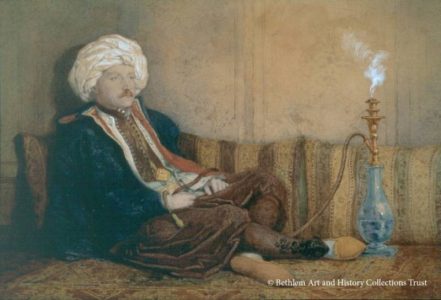
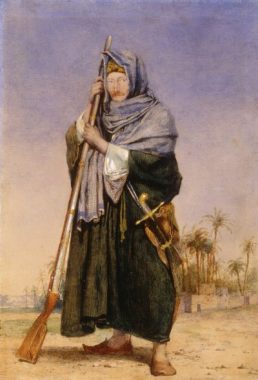
Thomas was also known as a writer on Welsh education and Welsh language, and a champion of the Welsh church. His work defended the Welsh people and language against the 1847 “Blue Books” which described the Welsh as dirty, lazy, ignorant, superstitious, deceitful, promiscuous, and immoral, and advocated eradication of the Welsh language. Fluent in Welsh, Phillips exposed the lies of the “Blue Books”, defended the Welsh people and their language, and proposed way to improve education in Wales.
On the 1861 census we found Sir Thomas listed at Llanellen House, he divided his time between Wales and a property in London. His occupation is listed as a Barrister and Knight. Thomas is unmarried and shared the house with three servants, married couple John and Elizabeth Jones and Hannah Rapin. Also present are two visitors, a retired County Surveyor Benjamin Jones and his wife Elizabeth.
After addressing a committee of the House of Commons in 1867, Phillips was struck with paralysis and died five days later, on 26th May, at his London home, 77 Gloucester Place, Portman Square. Following his death he was returned to Wales and buried in the churchyard of St Helen’s church in Llanellen The burial was performed by the Bishop of Llandaff. Thomas had never married so his estate was inherited by his sister’s son, Thomas Phillips Price, who later became MP for North Monmouthshire. We visited the grave in July 2024 and apart from needing a clean it is in excellent condition.
Growing up we were always slightly embarrassed of the role Mayor Phillips played in suppressing the Chartists. So it is wonderful to discover the significant contribution he made to many aspects of Welsh life including education and advancement of the Welsh language. Thomas is not as well-known as he should be, but we are proud to claim him as one of our own!
